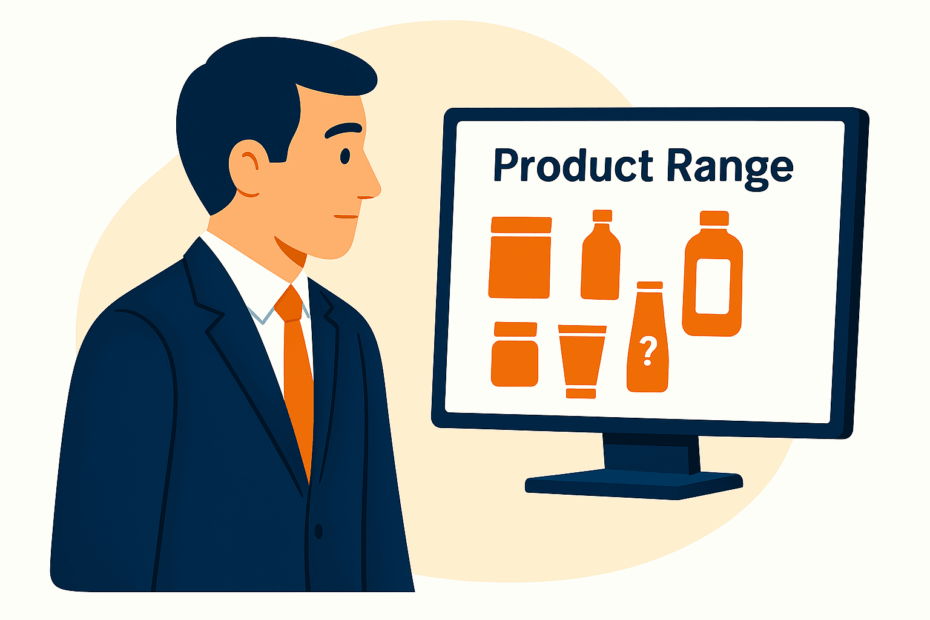Most retailers treat range analysis as a merchandising exercise. It is often seen as a question of which products stay, which are delisted, and what new lines to add. But when range analysis is disconnected from pricing intelligence, it becomes a missed opportunity.
Every range decision influences how customers perceive value and how your pricing compares to competitors. Without linking the two, retailers risk carrying unprofitable products, confusing shoppers with inconsistent price perception, and missing the market gaps competitors are already exploiting.
Understanding the range analysis benefits means recognising that assortment planning is not just about stock management. It is a pricing and positioning tool that can directly increase margin, improve competitiveness, and strengthen brand perception.
Range Analysis Benefits When Range and Pricing Operate in Silos
In many retail organisations, category managers focus on range planning while pricing specialists monitor the market. Both roles are essential, but too often they work in isolation.
This separation leads to range reviews that ignore external price positioning, while pricing teams respond to competitor moves without checking whether the product mix still supports the wider strategy. The outcome is a range that looks efficient internally but performs poorly in the market. It might meet internal KPIs but still lose share because pricing no longer reflects customer expectations or current competitive realities.
To achieve the full range analysis benefits, retailers must bring these teams together and align internal range performance with real market data.
Range Analysis Benefits Through Pricing Intelligence
The true power of range analysis emerges when it is combined with competitive pricing intelligence. This connection turns what used to be a merchandising exercise into a strategic pricing tool.
When teams can see both internal performance and external pricing data in one view, they uncover patterns that standard dashboards often miss. They can identify products that most competitors stock but where their prices sit above the market average. They can highlight exclusive or niche SKUs that are priced too aggressively, effectively competing with themselves. They can also pinpoint premium products that are too close in price to mid-tier competitors, confusing shoppers and eroding margin.
These insights reveal the real range analysis benefits. They enable retailers to refine their ranges based on how the market behaves rather than relying on historical internal data alone.
Range Analysis Benefits from Collaboration Between Teams
The advantages of range analysis grow significantly when pricing and category teams share data and collaborate closely. During promotional or seasonal periods, this partnership drives faster and more accurate decision-making.
Before a promotion, pricing teams can identify SKUs with weak price perception to prevent unnecessary discounting. During peak periods, shared visibility allows teams to prioritise high-impact products that drive customer conversion. After trading events, the same insight can highlight products that may have been delisted prematurely or priced incorrectly.
This level of coordination transforms pricing from a reactive process into a strategic growth driver. The range analysis benefits become measurable through faster reactions, higher margins, and better product positioning.
Practical Steps to Unlock Range Analysis Benefits
To unlock the full benefits of range analysis, retailers can start with a structured approach.
Incorporate competitor data into every range review. Include information such as average market price, price spread, and promotion frequency. These details reveal whether a category is under pressure or oversaturated.
Map SKUs to customer price perception segments. Group products by how shoppers view them — value, mainstream, or premium — and ensure that pricing reinforces that perception. Misalignments between perception and actual price often signal untapped opportunity.
Use insights to take clear, deliberate action. Remove duplicate or uncompetitive SKUs, reprice underperforming products, and identify exclusive listings that strengthen your differentiation.
By following these steps, retailers create a continuous feedback loop where range decisions inform pricing strategy, and pricing intelligence enhances assortment planning. This is how the real range analysis benefits are achieved.
Range Analysis Benefits That Lead from Shelf Logic to Market Logic
Retailers who link range analysis with pricing intelligence move from shelf logic to market logic. They begin to make decisions based on how the market behaves rather than relying only on internal sales reports.
The biggest range analysis benefit is clarity. Retailers gain visibility into how every SKU affects price perception, competitiveness, and profitability. With that visibility, they can act faster, refine pricing strategies, and build stronger connections between value, assortment, and customer experience.
At Insitetrack, we help retailers make this connection through flexible, ad-hoc pricing data and tailored reporting that reveals insights traditional dashboards miss. When range analysis and pricing intelligence work together, retailers move from reactive decisions to proactive strategy — driving better margins, smarter ranges, and lasting competitive advantage.



